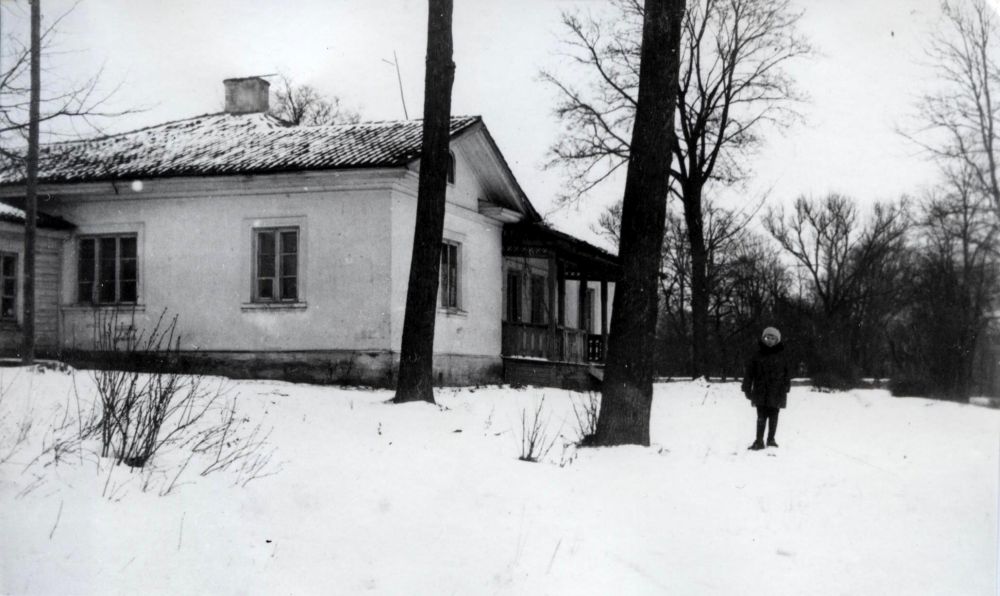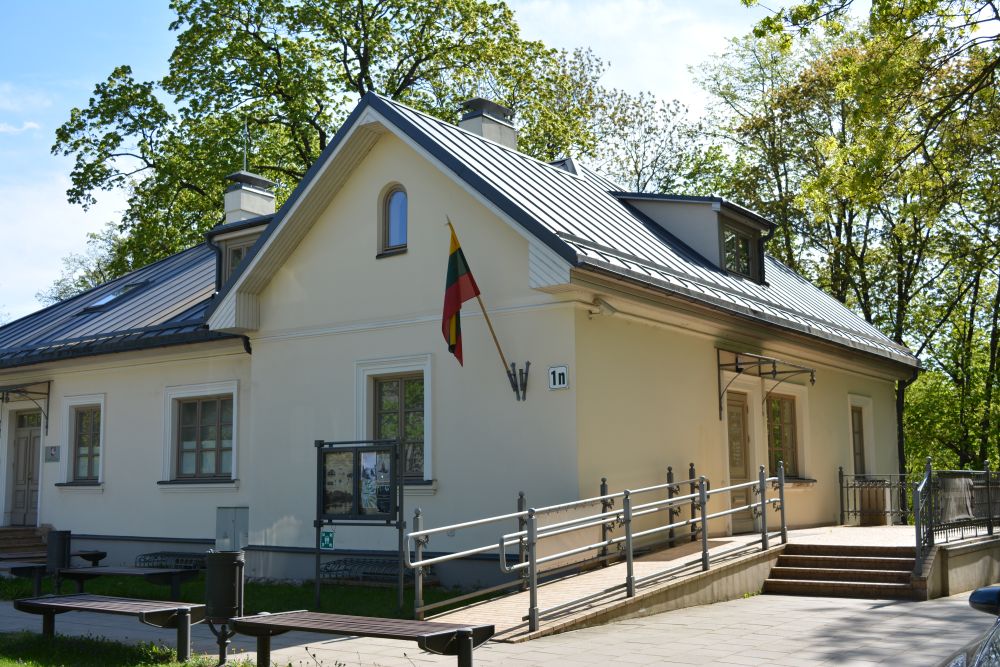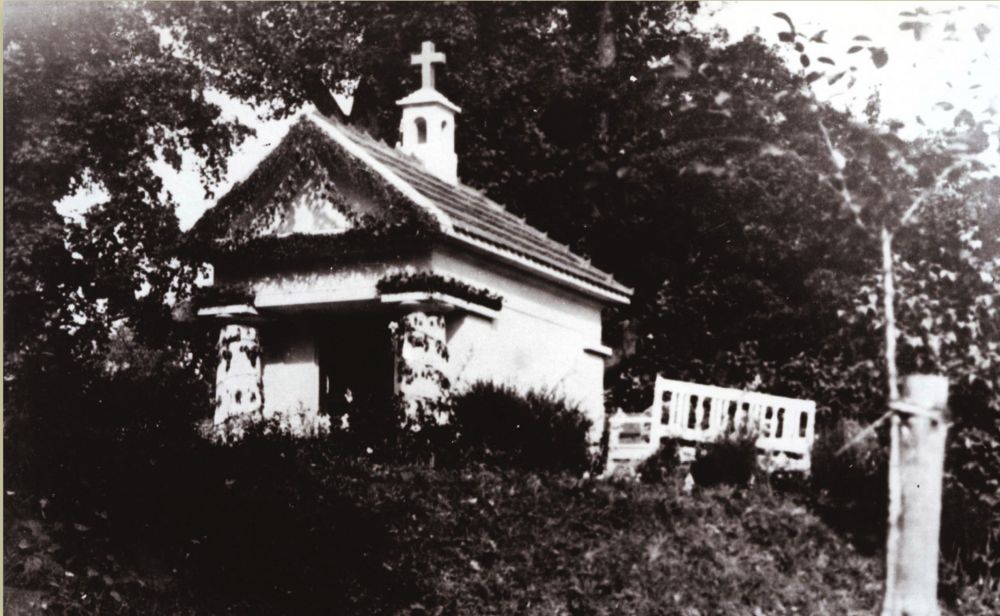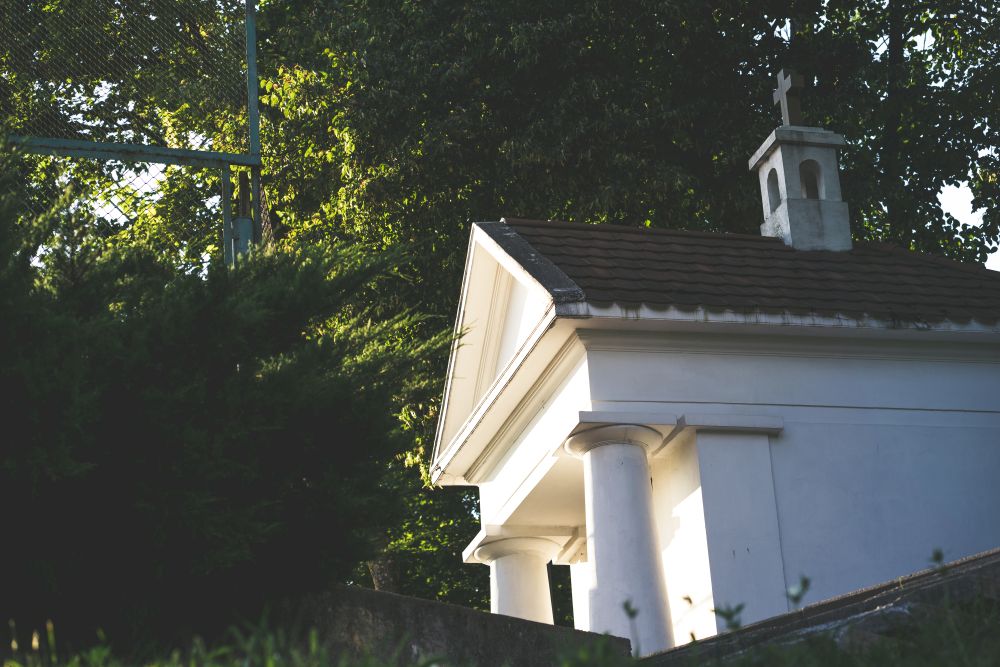White manor and the chapel of st. Theresa

White manor
In 1866 Col. Alexander Losev, one of the suppressors of the 1863–1864 uprising, a devote aid of Mikhail Muravyov the Hangman and a member of Interrogation Board, bought a plot of land next to the manor in Tuskulėnai and built a hunters’ lodge there.
In 1928 Franciszek Walicki, an engineer geodesist, head of the geological service of Vilnius, bought the dilapidated little house and outbuildings from Lidia Minakova and adjusted it to serve as a family summer cottage. The building was reconstructed by installing new windows, covering the roof with red tiles and adding a wooden veranda. It aslo had running water and electricity as well as in the eastern part of the house a terrace with elaborate wooden fretwork was added. The little cottage, painted in light colour, started to be called White Manor.
In the Walicki family estate (about 3 ha) there was a well-tended orchard, flower beds and a plot of land for growing vegetables. Specially designed steps led down to a terrain with an ornamentally arranged oval flower bed.

In 1944 the NKVD arrested and charged Walicki with collaboration with the Armia Krajowa. After serving a couple of months of imprisonment sentence in Lukiškės, he miraculously escaped the punishment and in 1945 his family repatriated to Poland. Members of the Soviet Communist party used to spend summers in the Walicki family villa. There was a kindergarten and later on, the premises were turned into residetial. In 2005–2008 the villa was reconstructed according to the project, designed by the Institute of Design and Restoration Ltd.
Nowadays the basement of White Manor houses museum exposition “The Secrets of Tuskulėnai Manor” that reveals the mechanism, created by the Soviet totalitarian regime of how death sentences were imposed and executions were carried out. The archival documents on display provide information about the executed and their executioners, while archaeological findings and iconographic material disclose the history of Tuskulėnai Manor.

The Chapel of st. Theresa
During 1930–1931, next to White Manor, on the grounds of Tuskulėnai manor, Walicki built the Chapel of St. Theresa in commemoration of his parents. Piotr Hermanowiecz (1881–1939), the famous sculptor from Vilnius, designed the chapel’s interior and supervised its construction. Built from monolithic reinforced concrete, possessing the elements of decoration, this graceful and compact chapel is an original pre-war building. A small bell tower with a gilded hollow tin plate cross was built on the tiled roof. On 17th September 1931 the chapel was consecrated and opened with the permission of the metropolitan archbishop of Vilnius.
Catholics from nearby houses went to the chapel for the Mass. There was an area for rest and a bench at the chapel that belonged to the Church of St. Raphael as well as two stones with runic characters were embedded by the main door.

The document, embedded in the chapel’s altar says: “On 28 07 1930, on Monday, the construction of the Chapel of St. Theresa began. In commemoration of the beloved parents of the Walicki family – Jan, son of Daniel, and Helena, daughter of Vincent Chrozonovicki.” The remains of these people were buried in Saulės Cemetery in Antakalnis.
Some time ago, an oil painting of St. Theresa by painter Marijonas Kuleša (1878–1943) hung above the altar as well as there was a beautiful hexagonal lamp inside.
There is an altar in the reconstructed chapel.